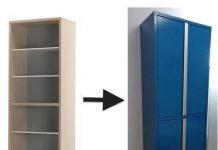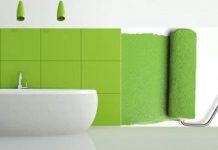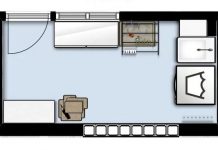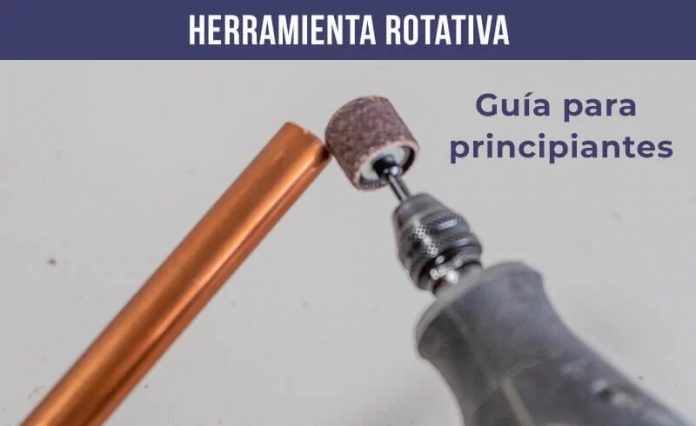
I am a fan of little machines and although some still cause me respect (drill, saw…), there are others that have become essential in my DIY projects. Among them is the multitool or rotary toola light and practical machine that is ideal for jobs such as engraving, carving, milling, cutting, sanding, polishing, etc… In short, a Swiss Army knife for all DIY lovers, both beginners and experienced.
I have to admit that until a few months ago I had never considered having a rotary tool and yet now it has become essential in my DIY work, to the point that I have carried out some DIY projects that I did not dare to do before, how to cut wood for the roof and partitions of this dollhouse that I made from a wooden box (you can see the step by step in this link).
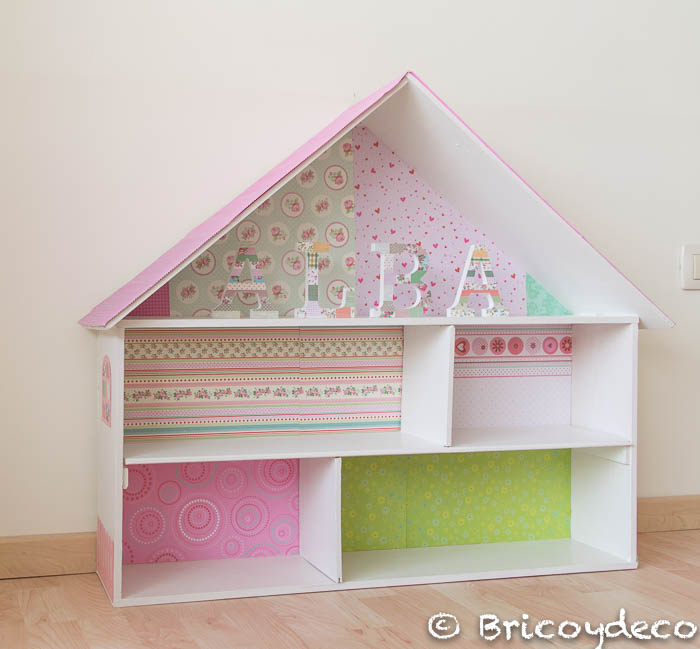
The operation of this type of tool is quite simple, they are made up of a body (or “core”) and a set of accessories that rotate (hence its name). In domestic terms, it could be compared to a mixer and its accessories (blades to grind, to whip egg whites, to knead, etc).
The great advantage of the multitool is precisely that it is “multi”, this means that it is enough to change the accessories to be able to carry out different jobs. In addition, due to their size they are very manageable, some models work without cables obtaining great autonomy, although you should not be fooled by their size since their powerful motor can exceed 30,000 rpm.
What can I do with a rotary tool?
With the right accessories, your rotary tool becomes a real Swiss Army knife, being able to carry out tasks such as:
- Cut– Cutting bits and discs can cut metal, wood, plastic, fiberglass, drywall, laminate flooring, vinyl plank, ceramic tile, cement board, and plaster. I have personally used discs to cut thin wood (up to 2 cm thick) and metal and PVC pipes, in both cases with very good results, although I recommend using a guide to make straight cuts.
- Drill: there are multipurpose bits but also special ones for wood and glass, I have used all three with very good results.
- grind and sharpen: stripping rust and paint without removing base material, sharpening tools, deburring and grinding metals. I have used this function to deburr the ends of steel tubes that I had cut.
- Sand: With sanding drums, fan sanding wheels and abrasive polishing discs, surfaces can be smoothed and material residues removed. Personally, this option has come in handy for creating a worn effect on furniture or objects, as well as for smoothing and softening cuts on wood and metal. It is also a perfect complement to the sanding block as it is used to go over small areas that do not quite look good.
- clean and polish: ideal on metal to recover knobs, handles, etc., as well as to restore the shine to gold jewellery. In my case I have used these accessories to polish the wax on small wooden reliefs since the tool adapts perfectly to this type of detail.
- Carve, engrave and mill: carve wood, engrave on glass and perform different milling tasks. I haven’t really tested these features yet, so I can’t tell you much about them.

What accessories do I need to get the most out of my rotary tool?
Normally, multitools come with the basic accessories to be able to carry out the tasks described in the previous point, although it is also possible to purchase more specific accessories at DIY centers depending on the material that we are going to work on, as well as replace those that wear out.
Keep in mind that In the case of accessories, cheap is usually expensivethat is to say that if the ones that come with the rotary tool are of low quality, they may not provide us with a good finish and we will have to renew them after a few uses.
From my personal experience I can tell you that when you get the taste of the multitool you want to have all its accessories, which are many and with prices ranging from 5 to 30 euros or more. However, you have to take it easy and count to 10, Assess which ones we are really going to need and use with some frequency.

What rotary tool do I buy?
Whenever I have to buy a tool, first of all I investigate what are the best rated by other users, I make a list with 3 or 4 brands or models and then write down their price. If I am going to use it a lot, I choose the best valued one and that my pocket can afford, and if I am not going to use it too much, I select the cheapest of those that I had noted down.
In this case I chose the first one on my list because I thought I was going to give it a lot of use and I was not wrong, I consider it to have been a good investment. However, if you are not sure of the use you are going to give it, there are quite cheap rotary tools on the market (about €20/30) that can be good to start with.
On the other hand, I recommend buying one. cordless rotary tool since it is the best option to take advantage of all its versatility, it also gives the possibility of being able to do work outdoors without having to depend on an electrical connection.
Regarding the functions, the most interesting is that it has the possibility of selecting different speeds since at low power they work better with delicate materials, while for the most resistant ones it is necessary to use all the power.

What precautions should I take when using a rotary tool?
Apart from those that come in the instruction manual that you have to read yes or yes, from my experience I recommend the following:
- Always use protective glasses. With this type of tool it is very easy for chips, small chips or dust to jump that can cause problems if they go into our eyes.
- Wear a mask and not only when we are sanding, but also when we cut an object since a particle can be thrown towards our nose/mouth and I assure you that at a certain speed the impact stings.
- Always clean the multitool after use, in this way we will ensure that the ventilation grilles are free of dust and dirt, avoiding overheating the device.
- put your hair upespecially if it’s long because otherwise you run the risk of it getting wrapped up in it when for some unknown reason you bring the tool close to your head (and yes, it got wrapped around me and luckily it was a scare).
- Make use of common sense: do not leave the multi-tool and accessories within the reach of children and pets, do not work near water, do not put your hands in front of something that you are cutting, etc.

Finally, I wanted to tell you that I have recently discovered a new use for my rotary tool that has nothing to do with DIY, and that is that with polishing accessories and using it at low power you can also do a pedicure. I love this machine!
Do you have or have you ever used one? rotary tool or multi-tool? If you have one, do you take advantage of it? If not, I encourage you to take it out of the drawer and discover all its possibilities, surely it will soon become an essential part of your DIY work.
If you liked this post, you can see many more tips and DIY ideas at .

